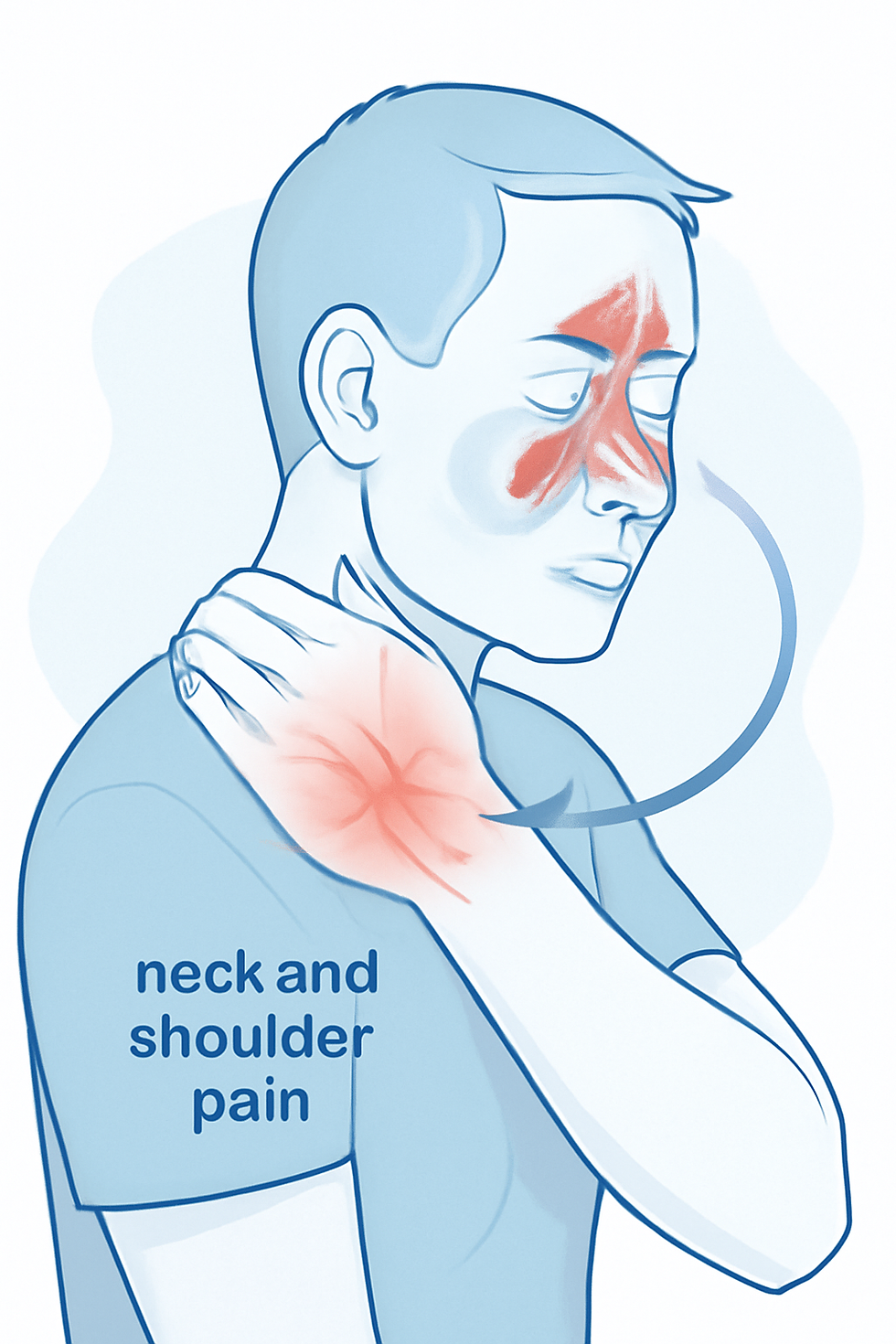🦴 Nose Block and Bad Posture: What’s the Hidden Connection?
- Dr Prashanth R Reddy

- Aug 8
- 2 min read
Updated: Aug 16
When we think of a nose block, we often associate it with colds, allergies, or sinus infections.But here’s something most people miss:
Chronic nasal obstruction can silently affect your posture—how you sit, stand, and even move.Yes, your breathing habits may be reshaping your spine without you realizing it.
🚶♂️ Why Does Nose Block Affect Posture?
When nasal breathing becomes difficult, the body adapts in subtle yet damaging ways:
1. Mouth Breathing Becomes the Default
A blocked nose pushes you to breathe through the mouth.
Mouth breathers often tilt the head forward to improve airflow.
This creates forward head posture—the root of neck, jaw, and upper back issues.
2. Neck and Shoulder Strain
Constant head tilt strains the neck and upper trapezius muscles.
Results in tight shoulders, rounded upper back, and even tension headaches.
3. Chest Collapse and Shallow Breathing
Mouth breathing discourages diaphragmatic (belly) breathing.
Leads to shallow chest breathing and a collapsed chest posture.
This reduces oxygen intake, leaving you tired and slouched.
4. Spinal Compensation
To balance the forward head posture, your lower spine tilts unnaturally.
Over time, this misalignment can result in chronic back pain and stiffness.
🧍♀️ Symptoms You Might Notice
Neck pain or upper back tightness
Rounded shoulders and slouched posture
Jaw discomfort or TMJ symptoms
Constant fatigue, even after rest
Feeling “off balance” or noticing gait changes
🧠 How Posture Affects the Brain
Poor posture = Poor oxygenation.And poor oxygenation means:
Brain fog
Low productivity
Mood disturbances
Chronic fatigue
Mouth breathing and bad posture create a vicious cycle that impacts both body and mind.
✅ What You Can Do
1. Treat the Root Cause: Nasal Obstruction
If you suffer from:
Allergies
Deviated Septum (DNS)
Turbinate hypertrophy
Chronic sinusitis
👉 Seek ENT evaluation.
Endoscopic sinus correction or allergy therapy can dramatically restore nasal airflow.
2. Correct Your Posture
Practice chin tucks, shoulder retractions, and thoracic extensions
Limit “tech neck” from long mobile or laptop use
Use a supportive pillow for better sleep posture
3. Retrain Nasal Breathing
Once nasal airflow is restored:
Start Buteyko breathing exercises
Practice Nadi Shodhana (alternate nostril breathing)
Use reminders to close your mouth and inhale through the nose
👨⚕️ A Final Word from Dr. Prashanth R. Reddy
“Most people don’t connect their posture problems to their nose. But when nasal breathing is compromised, the body compensates in ways that strain the spine.Fix your breathing—and your posture often corrects itself.”
📍 Book a Consultation
If you're dealing with:
Chronic nasal block
Forward head posture
Fatigue, neck pain, or slouching
Don't delay. Early diagnosis and a simple, scarless procedure can bring long-lasting relief to both your breathing and your posture.
📅 Book a Consultation Today
👨⚕️ Dr. Prashanth R. Reddy
ENT & Endoscopic Sinus Surgeon
🕐 11:00 AM – 1:00 PM (Weekdays)
🕐 1:30 PM – 3:00 PM (Saturday)
🕐 5:00 PM – 7:00 PM (Monday–Saturday)
🕐 11:00 AM – 1:00 PM (Sunday)



Comments